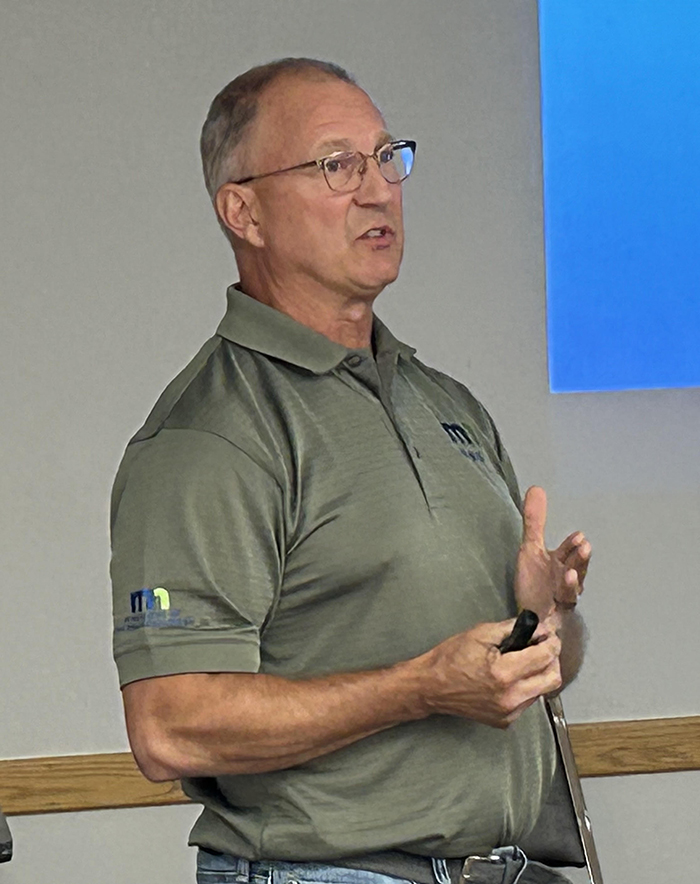Lake associations work closely with state DNR
News | Published on June 29, 2023 at 6:42pm GMT+0000 | Author: Tucker Henderson
0Groups focus on stocking lakes with fish, fighting AIS

Jim Wolters, DNR Area Fisheries Supervisor, spoke on June 15 to members of the Otter Tail County Coalition of Lake Associations (COLA).
By Tom Hintgen
Otter Tail County Correspondent
The Minnesota Department of Natural Resources (DNR) provides county anglers and lakes associations with information before fish stocking plans move forward in Otter Tail County.
“Before anything is implemented, we first collect public input on fish management,” said DNR Area Fisheries Supervisor Jim Wolters to members of the Otter Tail County Coalition of Lake Associations (COLA) Thursday evening, June 15, at the COLA gathering in the community center in the town of Ottertail.
Wolters explained that 250-foot gill nets and trap nets are used periodically to look for trends in fish populations. Then, in conjunction with anglers and lake associations, fish stocking practices can be adjusted.
“Gill nets, with different mesh sizes, are used primarily to monitor walleye, pike and perch,” he said, “and trap nets are used to sample panfish near shorelines.”
Once the fish data is collected, determinations are made on whether to start, modify or drop fish stocking plans in individual lakes. State fishing regulations also are taken into consideration.
Wolters touched on the subject of invasive species as did another speaker at the COLA gathering, David Helgerson of the West McDonald Lake Association near Dent and west of Perham.
“Zebra mussels have affected our lake since 2021,” Helgerson said. “Our lake, which is spring fed, consists of 590 acres, and negative signs of this invasive species can be seen in many areas of our lake.”
Thumbnail-sized zebra mussels filter food particles from the water, upsetting a lake’s food chain while increasing water clarity. In Minnesota the zebra mussels have a serious negative effect on walleyes because of increased water clarity in many lakes.
“Zebra mussel analysis and research is a continuing effort by the University of Minnesota,” Wolters said to COLA members. “Fish survival during the winter months is another ongoing issue.”
Wolters said his biggest fear is the possible spread of the silver carp from southern Minnesota into northern Minnesota. The average carp is 33 inches in length and 18 pounds. Carps jump out of the water periodically to clear debris from their gills.
Helgerson and Wolters are both knowledgeable about phosphorus runoff.
Rain and snow melt can wash fertilizers and manure into ditches, streams and lakes. Algae blooming can hinder recreation such as swimming while also damaging habitat for fish and other aquatic species. On the other hand, single-celled algae are a main source of food for fish.
A real danger comes from blue-green algae that can kill fish by causing oxygen levels to drop below the threshold for fish survival.
The Minnesota DNR pledges to continue to work with lake associations, counties, townships and communities for the preservation and protection of Minnesota lakes and rivers.
Wolters, a native of Faribault, holds a Bachelor of Science degree in biology from Minnesota State University, Mankato, and a Master of Science degree from South Dakota State University in fisheries science.
